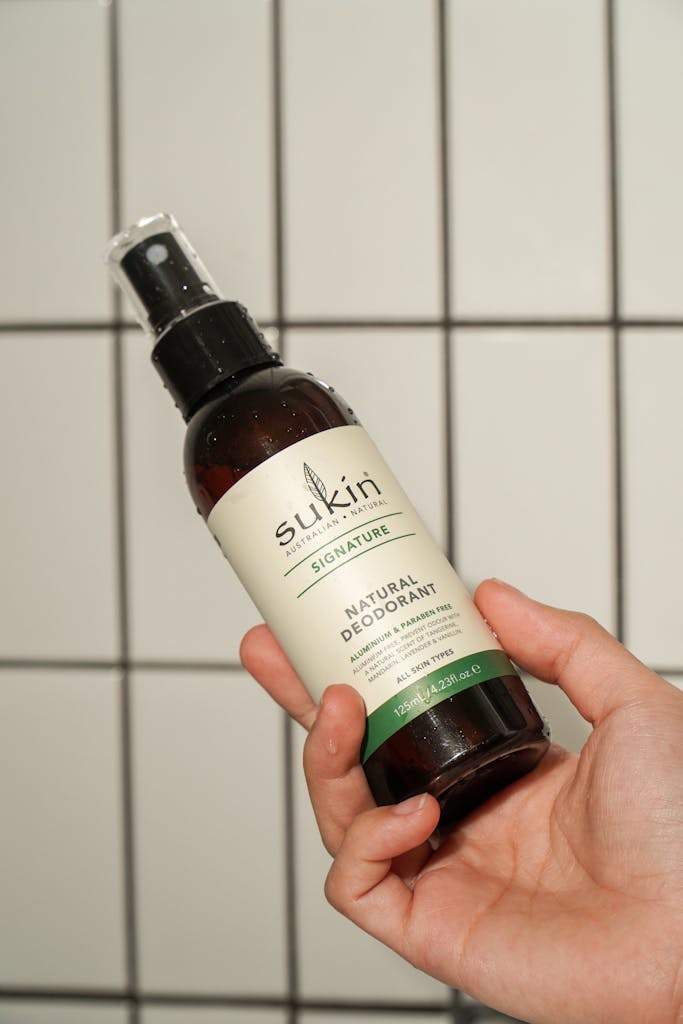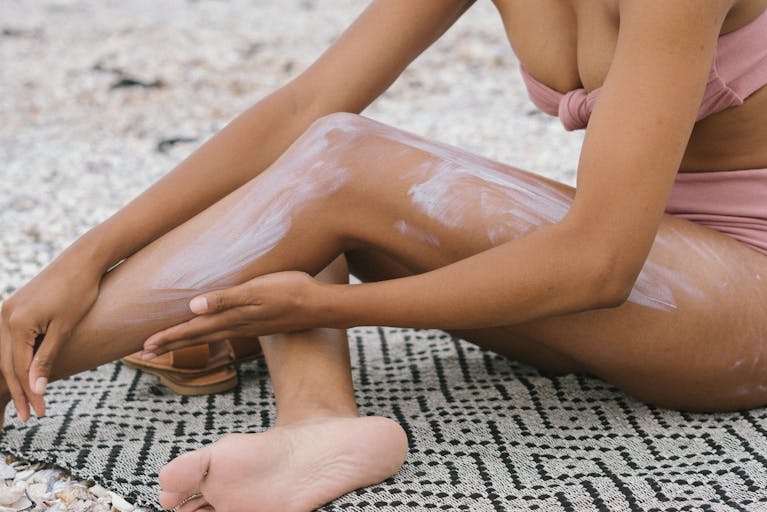
A year ago, I stood in front of my bathroom mirror, hesitantly applying natural deodorant for the first time. Like many of you, I’d heard about the benefits of switching to natural deodorant, but I was nervous about the change. Would it work? Would I end up a sweaty, smelly mess?
Fast forward 12 months, and I’m here to tell you that making the switch was one of the best decisions I’ve made for my personal care routine. But I’ll be honest – it wasn’t always smooth sailing. There were moments of doubt, days of discomfort, and yes, even a few embarrassing episodes of unexpected body odour.
That’s why I’m writing this guide. I want to share my journey of switching to natural deodorant, warts and all. I’ll walk you through what to expect, offer tips based on my own successes (and failures), and hopefully make your transition a bit easier than mine was.
Whether you’re on the fence about making the switch or you’ve just started your natural deodorant journey, this article is for you. Let’s dive into the world of natural deodorants together, exploring the good, the bad, and the slightly smelly. Trust me; if I can do it, you can too!
Why Switch to Natural Deodorant?
When I first contemplated switching to natural deodorant, I found myself weighing up various factors. Now, having made the switch, I can confidently share the benefits that convinced me and have kept me committed to natural deodorants:
- Fewer synthetic ingredients: Traditional deodorants often contain a cocktail of chemicals that I struggled to pronounce, let alone understand. Natural deodorants, on the other hand, typically use ingredients derived from plants and minerals. For me, this meant peace of mind about what I was putting on my skin daily.
- Gentler on sensitive skin: I’ve always had sensitive skin, and conventional deodorants sometimes left me with rashes or irritation. Many natural deodorants are formulated with soothing ingredients like aloe vera or shea butter, which I found to be much kinder to my skin.
- More environmentally friendly packaging: A significant draw for me was the eco-friendly packaging options. Many natural deodorant brands use recyclable or biodegradable containers, which aligns with my efforts to reduce plastic waste.
- Aluminium-free formulas: While the debate about aluminium in antiperspirants continues, I personally felt more comfortable using a product without it. Natural deodorants work by neutralising odour rather than blocking sweat glands.
- Allowing the body’s natural processes: I learned that sweating is a natural and necessary bodily function. Natural deodorants let you sweat (which helps regulate body temperature and release toxins) whilst still keeping odour at bay.
- Variety of scents: I was pleasantly surprised by the range of subtle, natural fragrances available. From refreshing citrus to soothing lavender, I found options that felt more ‘me’ than the overpowering scents of many conventional deodorants.
- Supporting smaller, ethical businesses: Many natural deodorant brands are small, ethical companies. I felt good about supporting these businesses and their commitment to sustainability and natural ingredients.
- Potential long-term health benefits: While research is ongoing, some studies suggest that certain ingredients in conventional deodorants may have long-term health implications. Switching to natural alternatives gave me peace of mind about potential long-term effects.
- A more mindful approach to personal care: Perhaps unexpectedly, switching to natural deodorant made me more aware of my overall hygiene and health habits. It encouraged me to think more critically about other products I use and their impact on my body and the environment.
While these reasons convinced me to make the switch, it’s important to note that everyone’s experience is unique. What works brilliantly for one person might not suit another. However, if you’re curious about natural deodorants, these potential benefits might just persuade you to give them a try. After all, you’ve got nothing to lose except perhaps a few smelly days in the beginning!

The Transition Period: What to Expect
When I first embarked on my natural deodorant journey, I’d read about the infamous “detox phase”, but I wasn’t quite prepared for the reality. Here’s an honest account of what I experienced, and what you might expect when switching to natural deodorant:
- Increased sweating: In the first couple of weeks, I noticed I was sweating more than usual. This was particularly noticeable under my arms, of course, but I also felt generally sweatier. It’s believed this happens because your body is adjusting to the lack of aluminium, which previously blocked your sweat glands. For me, this phase lasted about 10 days, but it can vary from person to person.
- Stronger body odour: Hand in hand with increased sweating came a stronger body odour. There were days when I felt self-conscious, wondering if others could smell me, your girl was smelling funky! This is normal – your body is expelling toxins and adjusting to the new deodorant. I found that showering more frequently and reapplying deodorant helped manage this. One of the companies I tried had a tester kit you could buy first so I carried around the little sample pot in my bag to be able to reapply on the go
- Skin reactions: Some people experience skin irritation during the transition. Luckily I didn’t have this problem, but If irritation persists for you or becomes severe, it’s best to consult a dermatologist.
- Changes in underarm appearance: I noticed that my underarms looked different – slightly darker and occasionally a bit bumpy. This is often temporary and part of the detox process. For me, it cleared up after about three weeks. The darkness can also be caused by the bicarbonate of soda in some natural deodorants.
- Fluctuations in effectiveness: There were days when my natural deodorant seemed to work perfectly, and others when it felt less effective. This inconsistency can be frustrating, but it’s part of the adjustment period as your body recalibrates its sweat and bacteria levels.
- Clothing stains: Some natural deodorants can leave marks on clothing, especially those with oils or waxes. I learned to apply less product and let it dry completely before dressing to minimise this issue.
- Heightened awareness of body odour: During the transition, I became hyper-aware of my body’s natural scent. This isn’t necessarily a bad thing – it made me more in tune with my body’s patterns and needs.
- Emotional rollercoaster: There were moments of doubt when I considered giving up and returning to my old antiperspirant. Patience and persistence were key.
- Gradual improvement: After about 3-4 weeks, I started noticing significant improvements. My sweating levels normalised, my odour decreased, and I felt more confident in the natural deodorant’s effectiveness.
It’s crucial to remember that everyone’s experience is unique. Some people sail through the transition with minimal issues, while others might take a bit longer to adjust. For me, the entire process took about three months before I felt fully comfortable with my new natural deodorant routine.
Despite the challenges, I found the transition period to be an interesting time of discovery about my body’s natural processes. It taught me patience and the importance of listening to my body. If you’re considering making the switch, don’t let the potential hurdles deter you. With the right mindset and preparation, you can navigate this transition successfully and come out the other side feeling fresher and more in tune with your body than ever

Tips for a Successful Transition
Having gone through the transition myself, I’ve gathered a wealth of tips and tricks that helped me succeed. Here’s what I learned:
- Time it right: I chose to start my switch during autumn when the weather was cooler. This made the initial increased sweating more manageable. Consider your schedule and climate when planning your transition. Avoid starting during high-stress periods or extremely hot weather if possible.
- Keep clean: I cannot stress this enough – hygiene is crucial during the transition. I found that showering daily, using soap on my underarms, and thoroughly drying the area before applying deodorant made a significant difference. On particularly warm days, I’d do an additional underarm wash midday if I was working from home.
- Stay hydrated: Drinking plenty of water seemed to help flush out toxins and reduce body odour. I aimed for at least 2 litres a day and noticed a positive difference in how I smelled.
- Be patient: This was perhaps the hardest part for me. There were days when I wanted to give up, but patience truly paid off. It took about 4 weeks for my body to fully adjust, but I’ve heard of others taking up to 6 weeks. Stick with it!
- Try different formulas: Not all natural deodorants are created equal. I experimented with a couple of different brands before finding my perfect match. Don’t be discouraged if the first one doesn’t work – keep trying!
- Use a clay mask: This tip was a game-changer for me. Once a week, I applied a bentonite clay mask to my underarms. It seemed to help draw out impurities and speed up the detox process. Leave it on for about 5-10 minutes before washing off.
- Exfoliate gently: Regular, gentle exfoliation helped remove dead skin cells and bacteria that contribute to odour. I used a soft washcloth or a very gentle scrub once or twice a week.
- Dress strategically: During the transition, I favoured breathable, natural fabrics like cotton and linen. These allowed my skin to breathe and reduced sweat buildup.
- Carry backup: As I mentioned earlier I always kept my natural deodorant in my bag for touch-ups throughout the day. This gave me peace of mind and allowed me to freshen up when needed.
- Mind your diet: I noticed that certain foods, particularly garlic and onions, seemed to intensify body odour during the transition. Paying attention to your diet and potentially reducing these foods temporarily might help.
- Manage stress: Stress can increase sweating and body odour. I incorporated stress-management techniques like deep breathing and meditation into my daily routine and started my journey during a period of annual leave so for the first couple of weeks I didnt have the stress of work.
- Be open to different application methods: Natural deodorants come in various forms – sticks, creams, sprays, and even crystals. Don’t be afraid to experiment with different application methods to find what works best for you.
- Give each product a fair trial: Unless you experience severe irritation, try to stick with each new deodorant for at least a week. It takes time for your body to adjust to new formulas.
Remember, transitioning to natural deodorant is a personal journey. What worked for me might not work the same for you. Be prepared to do some trial and error, and don’t be discouraged if it takes some time to find your groove. The key is to listen to your body, be patient with the process, and celebrate the small victories along the way. In the end, I found the transition to be a rewarding experience that left me feeling more in tune with my body and confident in my personal care choices.

Choosing the Right Natural Deodorant
Finding the perfect natural deodorant can feel like searching for a needle in a haystack. After trying numerous products, here’s what I learned about selecting the right one:
- Ingredients: I quickly realised that understanding the ingredient list was crucial. Here are some common effective ingredients I encountered:
- Baking soda: Great for odour control, but can be irritating for some people (myself included).
- Arrowroot powder: Helps absorb moisture without irritation.
- Coconut oil: Has natural antibacterial properties.
- Essential oils: Provide natural fragrance and often have antibacterial qualities.
- Zinc oxide: Helps control odour without irritation.
- Magnesium hydroxide: Another effective, gentle odour-fighter.
I found that products with baking soda and essential oils worked best for me, and then I switch to an unscented coconut oil and shea, sensitive formula when the discolouring starts.
- Scent: Natural deodorants come in a wide array of scents. I experimented with several:
- Unscented: Great for sensitive skin or those who prefer no fragrance.
- Floral: Lavender and rose were popular options.
- Citrus: I found these refreshing, especially in summer.
- Woodsy: Cedarwood and sandalwood offered a more masculine scent, perfect if you are trying to get your partner on board
- Herbal: Scents like sage and tea tree also have antibacterial properties.
After trying various options, I settled on a light, citrusy scent that felt fresh without being overpowering.

- Format: Natural deodorants come in various formats, each with pros and cons:
- Sticks: Convenient and familiar, but can sometimes leave residue on clothes.
- Creams: Often more concentrated, but require using your fingers to apply.
- Sprays: Quick to apply and dry, but sometimes less effective for heavy sweaters.
- Crystal deodorants: Long-lasting but can be less effective for strong odours.
- Roll-ons: Easy to apply, but can feel wet initially.
I found that cream deodorants worked best for my lifestyle, the company I chose came with a little wooden stick so you don’t have to use your fingers in the pot.
- Skin sensitivity: If you have sensitive skin like me, consider:
- Fragrance-free options
- Products with soothing ingredients like aloe vera or chamomile
- Avoiding common irritants like baking soda
I had to try a few before finding one that didn’t irritate my skin.
- Sweat level: Consider your personal sweat levels when choosing. As a moderately heavy sweater, I found that:
- Deodorants with a higher concentration of active ingredients worked better for me
- Reapplying midday was sometimes necessary
- Ethical considerations: I also factored in:
- Cruelty-free and vegan certifications
- Sustainable packaging
- Company ethics and transparency
- Price point: Natural deodorants can be pricier than conventional ones. I found it helpful to:
- Look for trial sizes before committing to full-sized products
- Consider the cost per use rather than just the upfront price
- Remember that effectiveness is worth paying a bit extra for
- Season: I discovered that my deodorant needs changed with the seasons:
- Stronger formulations for summer
- Moisturising ingredients for winter to combat dry skin
- Activity level: As someone who lives a busy lifestyle, I needed a deodorant that could keep up:
- Sport or active formulations for workout days
- Standard formulations for regular days
- Application feel: This might seem minor, but the texture and feel of the application mattered to me:
- Some felt too wet or sticky
- Others left a powdery residue
- I preferred ones that went on smoothly and dried quickly
- Longevity: I paid attention to how long the effects lasted:
- Some needed reapplication by midday
- Others lasted all day, even after being out all day
- Customer reviews: While everyone’s experience is different, I found reading reviews helpful:
- Looking for reviewers with similar skin types or concerns
- Noting common praises or complaints
Remember, finding your perfect natural deodorant might take some trial and error. I went through a few different brands before finding ‘the one’. Don’t be discouraged if the first few don’t work out – your perfect match is out there! Once you find it, the peace of mind and confidence that comes with using a natural product that works for you is truly worth the journey.

Common Misconceptions
When I first started exploring natural deodorants, I encountered several misconceptions. Let’s debunk these myths based on what I’ve learned:
- Natural deodorants are antiperspirants: This was my first misunderstanding. Natural deodorants and antiperspirants are not the same:
- Antiperspirants use aluminium compounds to block sweat glands
- Natural deodorants allow you to sweat (a normal, healthy bodily function) but work to neutralise odour I learned to embrace sweating as a natural process, understanding that it doesn’t necessarily mean smelling bad.
- They don’t work: I initially believed this myth, especially during the transition period. However:
- Natural deodorants can be very effective once your body adjusts
- They work differently from conventional deodorants, targeting odour-causing bacteria rather than blocking sweat
- Effectiveness can vary between brands and individuals It took some experimentation, but I found natural options that work as well as, if not better than, my old antiperspirant.
- One size fits all: Just like conventional deodorants, natural ones are not universal:
- Different formulations work for different body chemistries
- What works for your friend might not work for you
- You may need to try several before finding your perfect match I went through a few different brands before finding my ideal natural deodorant.
- Natural means completely chemical-free: This is a common misunderstanding:
- All substances, including natural ingredients, are made of chemicals
- “Natural” typically means derived from nature rather than synthesised in a lab
- Some natural deodorants may still contain synthetic preservatives or fragrances I learned to read ingredient lists carefully and research any unfamiliar components.
- They’re all eco-friendly: While many natural deodorants are more environmentally friendly, it’s not a given:
- Some still come in plastic packaging
- Not all ingredients are sustainably sourced I now look for brands that prioritise sustainable packaging and ethical sourcing.
- Natural deodorants are always gentle on the skin: I learned this wasn’t always true:
- Some people react to natural ingredients like essential oils or baking soda
- “Natural” doesn’t automatically mean hypoallergenic It’s important to patch test and be aware of your skin’s sensitivities.
- Switching is an instant process: This was a big misconception for me:
- There’s often a transition or “detox” period when switching
- It can take weeks for your body to adjust
- Some people give up too soon, not realising it’s a process patience was key in my transition journey.
- Natural deodorants are all the same: I quickly learned there’s a wide variety:
- Different active ingredients (e.g., baking soda, magnesium, zinc)
- Various formats (sticks, creams, sprays, crystals)
- Range of scents and unscented options Exploring this variety was part of the fun in finding my perfect match.
- They’re only for people with minimal body odour: As someone who was initially self-conscious about body odour, I feared this:
- Natural deodorants can be effective for a range of body types and odour levels
- Some are specifically formulated for heavy sweaters or strong odours I found options that worked well, even on my most active days.
- Natural deodorants are just a trend: Some people dismiss natural deodorants as a passing fad:
- The move towards natural products is part of a larger shift in consumer awareness
- Many people, like myself, stick with natural deodorants long-term after experiencing the benefits A year into my switch, I’m convinced it’s more than just a trend for me.
- They’re always more expensive: While often pricier upfront:
- Some last longer than conventional deodorants
- There are budget-friendly options available
- The potential health and environmental benefits can outweigh the cost difference I’ve found the slight price increase worth it for the peace of mind and effectiveness.
- You can’t exercise or be active with natural deodorants: As someone who regularly out all day, I was concerned about this:
- Many natural deodorants are formulated for active lifestyles
- Some even perform better during physical activity than conventional options I’ve successfully used natural deodorants through long, active days.
By understanding and debunking these misconceptions, I’ve become more confident in my choice to use natural deodorants. It’s important to approach the switch with an open mind, realistic expectations, and a willingness to experiment. Remember, what works for one person may not work for another, but with patience and persistence, you can find a natural deodorant that suits your needs perfectly.

Conclusion: Embracing the Natural Deodorant Journey
As I reflect on my year-long experience with natural deodorants, I’m reminded of the ups and downs, the discoveries, and the personal growth that came with this seemingly simple switch in my personal care routine.
When I first decided to transition to natural deodorant, I was filled with a mix of excitement and trepidation. The promise of fewer synthetic ingredients and more eco-friendly options was appealing due to my fertility journey, but I worried about the effectiveness and the dreaded “transition period” I’d read so much about.
Now, on the other side of that transition, I can confidently say that switching to natural deodorant has been a rewarding experience. Yes, there were challenges – the initial increase in sweat and odour, the trial and error of finding the right product, and moments of self-doubt. But these challenges taught me patience, body awareness, and the importance of perseverance.
I’ve learned that making the switch is more than just swapping one product for another. It’s a holistic change that can impact various aspects of your life:
- Body awareness: I’ve become more in tune with my body’s natural processes and rhythms.
- Environmental consciousness: The switch has made me more mindful of the environmental impact of my personal care choices.
- Ingredient literacy: I’ve learned to read and understand product labels, a skill that’s extended to other areas of my life.
- Patience and perseverance: The transition period taught me valuable lessons about sticking with long-term changes.
- Community: I’ve connected with others on similar journeys, sharing tips and experiences.
For those considering making the switch, I encourage you to approach it with an open mind and realistic expectations. Remember:
- The transition period is temporary and varies for everyone.
- Finding the right product might take some trial and error.
- What works for others might not work for you, and that’s okay.
- The benefits often extend beyond just odour control.
If you’re already on your natural deodorant journey, keep going! Whether you’re still in the transition phase or have found your perfect match, remember that you’re making a positive choice for your body and the environment.
For those who’ve tried natural deodorants and found them ineffective, consider giving it another go. The market has evolved significantly, with new formulations and innovative ingredients constantly emerging. You might find that a product that didn’t work for you a year ago could be perfect now.
Ultimately, the decision to use natural deodorant is a personal one. It’s about finding what works best for your body, lifestyle, and values. My experience has been overwhelmingly positive, but I recognise that it might not be the right choice for everyone.
As we become more conscious of what we put on and in our bodies, as well as our impact on the environment, exploring natural alternatives like deodorants is a step in a positive direction. It’s a small change that can lead to bigger shifts in how we approach personal care and our relationship with our bodies and the world around us.
So, whether you’re a natural deodorant veteran, a curious newcomer, or someone still on the fence, I hope my experiences and insights have been helpful. Here’s to embracing our natural selves, one sweat gland at a time!
Remember, the journey to finding the right natural deodorant is just that – a journey. Enjoy the process, learn from it, and don’t be afraid to sweat a little along the way. After all, it’s only natural.






